A Racial Introduction to Chile, Part I
Benjamin Villaroel, American Renaissance, August 31, 2018
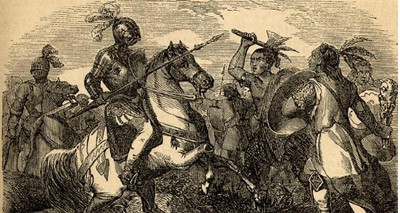
This is the first of a three-part series. Here is the second part. Here is the third part.
Much like whites in Europe and the Anglosphere, the whites of the small Latin American nation of Chile face a demographic crisis that stems from unchecked immigration and low birth rates. Chile has a distinctive history, society, and culture little known or appreciated in the English-speaking world, but it has arrived — in its own, unique way — at the same racial crossroads as such nations as Britain, France, and the United States. It’s a fascinating story, well worth telling, and underscores the global nature of our susceptibility to dispossession.
A regional powerhouse
There are three factors that set Chile apart from the rest of Latin America. (For the purposes of this essay, “Latin American” means every nation in the Western Hemisphere aside from the United States and Canada, including Caribbean islands.) Those three are: democratic institutions, economic power, and military prowess.
Chile’s democratic tradition, while less robust than that of Britain or the US, is much stronger than any of its neighbors. Aside from Augusto Pinochet’s military regime from 1973 until 1990, and Carlos Ibáñez del Campo’s first government, from 1927 until 1931, Chile has never had a dictatorship lasting more than a year — and its two twentieth century autocrats, it should be noted, are among the most benign in Latin American history. Many other nations in South America are dizzyingly volatile. Between 1900 and 2000, Peru had 31 different heads of state, averaging a change in leader about once every three years. During the same period, Bolivia had 45 different heads of state — averaging a new one almost every two years.
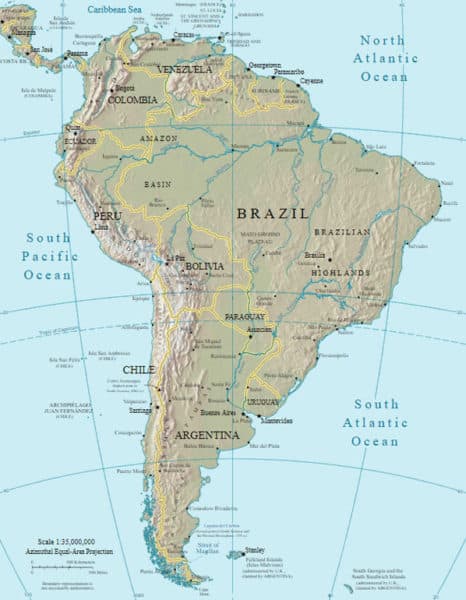
Chile’s relative absence of corruption is also a testament to the strength of its institutions. When the world’s countries are ranked from least to most corrupt (meaning number one is the least corrupt), Chile is number 24, meaning it is less corrupt than several European countries, such as Spain, Portugal, and Poland. Very few other Latin American nations even come close to this ranking: Brazil is 79, Argentina is 95, Bolivia is 113, and Mexico is 123. Similarly, Chile is considered to be one of only three South American nations with complete freedom of the press — the other two are Uruguay and Suriname.
Chile’s Gross Domestic Product (GDP) per capita is the highest on the continent, and over three times that of its neighbor Bolivia, and nearly double that of its neighbor Peru. There are other indicators of Chile’s prosperity as well. In Chile, 55 percent of the population has a credit card. In Brazil, it is 30 percent, in Mexico 25 percent, and Peru just 20 percent. For every 1,000 Chilean citizens, there are 230 automobiles. In Peru it is 73, and in Bolivia it is just 70. Per capita, Chile has more smartphones than any other nation in Latin America — and more even than China or Russia. I have spent plenty of time in Chile, and while it is appreciably poorer than the US and Western Europe, its economy is quite modern. In the capital city of Santiago, you can buy Red Bull, take an Uber to a rock concert, go shopping at American and European clothing retailers, and so on.
Chile’s military history is equally impressive. In the 19th century, Chile decisively defeated its two northern neighbors Bolivia and Peru in what is known as the “War of the Pacific.” Chile gained vast swathes of resource-rich land from this conflict, and left Bolivia permanently landlocked. In the same century, Chile finally and decisively defeated the hostile Amerindian nation to their south, the Araucanos (who are sometimes referred to as “Mapuches”), after fighting them on-and-off for centuries. Just as the War of the Pacific has many parallels to America’s war with Mexico, Chile’s southward territorial expansion at the expense of the Amerindians has many parallels to America’s westward expansion. Chile has had two (arguably three) very small civil wars, each lasting a year or less, with minimal bloodshed. Just as Chileans have no historical understanding of what it is like to live under a harsh autocratic regime such as that of Fidel Castro, they have no historical understanding of the sort of catastrophic total civil war that America experienced in the 1860s, or that engulfed much of Central America throughout the 1980s. Chile has never lost a war, and today its technologically advanced, well equipped, and well trained military is feared and envied by its neighbors.
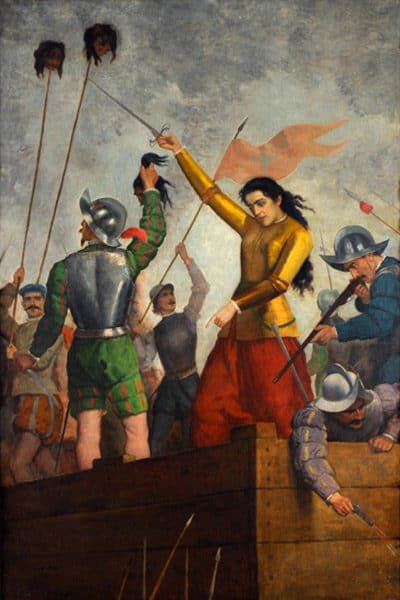
Spanish conquistadores defend the recently founded city of Santiago against Araucanos in the mid-sixteenth century. The woman in the center is Inés de Suárez, a fearless warrior, and lover of Pedro de Valdivia, the leader of the first successful conquistadores in Chile.
Racially distinct
Clearly, these three ways in which Chile surpasses the rest of Latin America — democratic, economic, and military — cannot be understood without looking at that central question — race. Chile, along with Uruguay and Argentina, is much whiter than the rest of Latin America. According to the CIA, Bolivia is five percent white, 20 percent Amerindian, 68 percent mestizo, one percent black, and 6 percent other or mixed. Peru is 15 percent white, 45 percent Amerindian, 37 percent mestizo, and 3 percent other. Chile is 88.9 percent white, 9.1 percent Araucano Indian, and 2 percent other — almost entirely composed of other much smaller Amerindian nations. Chile, then, is about five times whiter than Peru and 17 times whiter than Bolivia. It must be stressed, however, that the whites of Chile are less white than what most Americans consider to be white. In addition to the bulk of Chileans having Spanish instead of English ancestors, giving them a darker appearance to begin with, there was also more miscegenation in Chile than in America or Canada. There have been several scientific attempts to get to the bottom of Chile’s mixed genetics:
- A 1994 study of epidemiology concluded that, “At present the Chilean population is approximately 64% white and 35% Amerindian with traces of other admixture.”
- A 2008 genealogy of several Latin American countries broke down the average Chilean as: 51.6 percent white (plus or minus 2.7 percent), 42.1 percent Amerindian (plus or minus 1.7 percent), and 6.3 percent black (plus or minus 1.7 percent).
- In 2014, a genealogy of Chile concluded that the average Chilean was 51.85 percent white (plus or minus 5.44 percent), 44.34 percent Amerindian (plus or minus 3.9 percent), and 3.81 percent black (plus or minus 0.45 percent). They noted as well that, “higher American [Indian] components were found in northern and southern Chile and higher European components were found in central Chile,” and only “half of the Chilean population harbors African genes.”
- In 2015, another genealogy put the average Chilean at: 57.2 percent white, 38.7 percent Amerindian, 2.5 percent black, and 1.7 percent east Asian.
These studies do not convey the sliding scale that is Chilean society. The elite is pure or nearly pure white, while the destitute and indigent are pure or nearly pure Amerindian. The middle class is somewhere in between. The upper middle class is on the whiter side of in between, and so on. Any average therefore misses a great deal. A 2002 poll of Chileans illustrates this: when asked if they had Amerindian blood, 8.3 percent of respondents said “a lot,” 43.4 percent said “some,” 40.3 percent said “none,” and 7.8 percent said “I don’t know.” In 2011, when asked to identify with a race, 59 percent said white, 8 percent said Amerindian, 25 percent said mixed, and 1 percent said mulatto — by which they mean of mixed black ancestry, not specifically half white and half black.
While Americans know the word “mestizo” — people of mixed Amerindian and white ancestry but majority Amerindian — in Latin America some people are known as “castizos,” or of mixed Amerindian and white ancestry, but majority white. Based on my own observations, I would say the majority of Chileans are a kind of “high yellow” (for lack of a better term) castizo. Put another way: I would estimate that 75 percent of the population is 75 percent white or more. Historically in Chile, the racial dichotomy has been “Amerindian or not Amerindian.” All non-pure Amerindians are, more-or-less, somewhere on a very broad spectrum of “white.” Socially speaking, someone whose ancestry is entirely Basque, Croatian, and German is white, but so is someone whose ancestry is 10 percent Araucano, 10 percent Incan, 50 percent Spanish, and 30 percent Belgian. A Chilean who is 50 percent Italian, 25 percent Basque, and 25 percent Greek would be considered white as well — though his skin may be darker than a Chilean who is actually less European, such as one who is 10 percent Araucano, 10 percent Incan, 50 percent Spanish, and 30 percent Belgian.
Because of the large presence of Mediterranean whites, the genotype and phenotype of whiteness in Chile do not correlate as neatly as in the Anglosphere. The result of this is that Chileans have a “big tent” view of whiteness; those who are considered white in Chile are certainly majority white, but plenty would not be considered white in the United States or Australia. In a sense, Chilean whiteness is similar to African-American blackness. African-Americans see themselves as black, which is perfectly reasonable as most of them are majority black. However, on average they have 20-30 percent admixture of white and Amerindian blood, and the degree of admixture varies greatly between individuals. Still, they all see themselves as black, and talk of the different “shades” or “colors” within their race — as do outsiders. Chilean whiteness is similar.
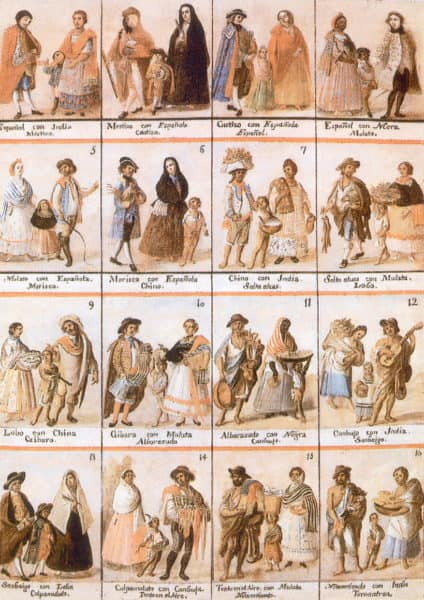
An old guide to the many different racial categories used in Spanish colonies. Click the image for an enlarged version.
Here are some prominent Chileans, past and present, that illustrate Chile’s whiteness scale:

Camila Vallejo Dowling, Communist congresswoman.

Gabriel Boric, far-left congressman. He is from the Chilean “deep south,” a very cold and very white place. The “ic” at the end of his last indicates his Croatian heritage.
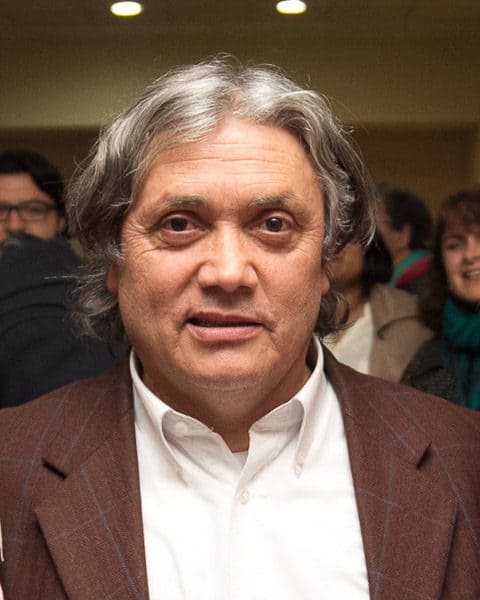
Alejandro Navarro, Leftist senator.

Model and actress Lorenza Izzo — who is now married to Eli Roth, the American horror movie director.
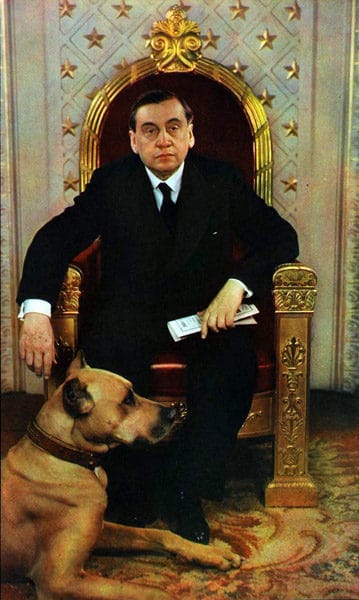
Right-wing President Arturo Alessandri, of Italian ancestry.

Arturo Vidal, a soccer star.

Dario Paya, far-right former senator, generally considered Araucano, but is almost certainly mixed.
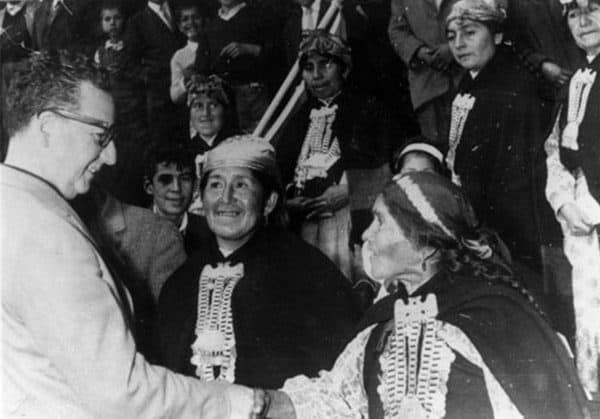
Marxist President Salvador Allende, who was of Belgian and Basque heritage, meets with Araucanos in traditional garb.
The Chilean intellectual Nicolás Palacios, in his influential book The Chilean Race (1904), wrote that the Chilean yeoman was of very high genetic stock because he was a hybrid of the Goth-descended Spanish conquistadores and the Araucanos — which like the Cherokee and Seminole tribes in North America, were widely considered to be immensely superior to all others in the region. This theory was very well received in the early 20th century, and was popularized by Chile’s greatest historian, Francisco Antonio Encina, in his 20-volume work, History of Chile from Prehistory to 1891 (1940).
The American scholar of race Lothrop Stoddard praised the whiteness of Chile’s upper classes in his work The Rising Tide of Color Against White World Supremacy (1921). He is worth quoting at length:
Chilean history differs widely from that of the rest of Latin America. A land of cool climate, no gold, and warlike Araucanian Indians, Chile attracted the pioneering settler rather than the swashbuckling seeker of treasure-trove. Now the pioneering types in Spain come mainly from those northern provinces which have retained considerable Nordic blood. The Chilean colonists were thus largely blond Asturians or austere, reasonable Basques, seeking homes, and bringing their women. Of course there was crossing with the natives, but the fierce Araucanian aborigines clung to their wild freedom and kept up an interminable frontier warfare in which the occasions for race-mixture were relatively few. The country was thus settled by a resident squirearchy of an almost English type. This ruling gentry jealously guarded its racial integrity. In fact, it possessed not merely a white but a Nordic race-consciousness. The Chilean gentry called themselves sons of the Visigoths . . .
Furthermore, Chile was receiving fresh accessions of Nordic blood. Many English, Scotch, and Irish gentleman-adventurers, taking part in the War of Independence, settled down in a land so reminiscent of their own. Germans also came in considerable numbers, settling especially in the colder south. Thus the Chilean upper classes, always pure white, became steadily more Nordic in ethnic character. The political and social results were unmistakable. Chile rapidly evolved a stable society, essentially oligarchic and consciously patterned on aristocratic England. Efficient, practical, and extremely patriotic, the Chilean oligarchs made their country at once the most stable and the most dynamic factor in Latin America.
Stoddard’s assessment was accurate. Within a decade and a half, Chile had its own sizeable National Socialist Party, modeled after the German original. This was no fringe movement either; it had tens of thousands of members, and elected three congressmen in the 1937 elections. It dwindled into irrelevance as World War Two came to a close.
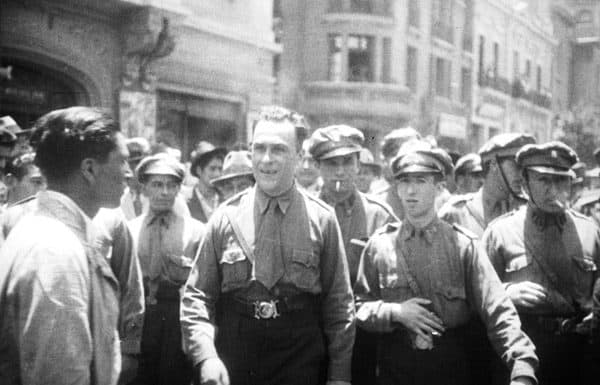
Founder of Chilean Nazism Jorge González Von Marées (center), flanked by members of his Popular Socialist Vanguard.
Another long-standing point of Chilean racial pride is its large population of Basques. Basques are a distinct ethnic group from northern Spain and France (mostly Spain). Their language, Euskara, is not Indo-European — suggesting that they are a very old European ethnicity.
The Basque genetic makeup is easily distinguished, and Basque skin tone is whiter and their IQ is higher than the average Spaniard. Many people find Basque people very attractive.
Here are two popular Basque models:

Jon Kortajarena

Sheila Márquez
During the Iberian diaspora of 1500–1850, Basques migrated to Chile in extremely high numbers (very few went elsewhere in the Western hemisphere), where they went on to form something of an elite. In Amerikanuak: Basques in the New World, William A. Douglass and Jon Bilbao write:
Throughout the seventeenth and eighteenth centuries, Chile continued to attract large quantities of Basques. Thayer Ojeda estimates that during the two centuries fully 45 percent of all immigrants in Chile were Basques, and by the nineteenth century half of all illustrious persons in Chilean history and society were of Basque descent. To this day the Basques are on of Chile’s most durable and influential ethnic groups.
Dependent upon whether you count “one drop” as Basque heritage, estimates of how many Chileans are partially or fully Basque vary considerably — generally, between 10 and 30 percent of the population. However they are counted, Basques are a cornerstone of Chile’s genetic mosaic, and have had a profound influence since before independence up to the present. A list of prominent Chileans, throughout history, with Basque heritage is as long as a list of prominent Americans of Anglo-Saxon heritage.

Contemporary Chilean writer Isabel Allende. She is of Portuguese, Castilian, and Basque stock — an “Iberian mutt.”
Like the United States and neighboring Argentina, throughout the 19th century, especially the second half, and into the 20th, Chile was the destination for a wide variety of European settlers and immigrants. The largest nationalities represented were: French, British, Irish, German, Italian, Portuguese, Croatian, Dutch, Russian, Greek, Austrian, Belgian, Ashkenazi Jewish, Sephardic Jewish, Swiss, Polish, Hungarian, and of course, Spanish. During this time Chile also received its first two non-European immigrant waves: Northwestern Middle Easterners and East Asians.
Model minorities
Starting in the early 20th century, Armenians, Jordanians, Mizrahi Jews, Turks, Syrians, Lebanese, and especially Palestinians sought refuge in Chile from the oppressive and crumbling Ottoman Empire. While this destination may seem surprising at first, Chile’s desert agriculture in the north is very similar to the desert agriculture of the upper Middle East, and at that time, Chile was considerably less war torn and nationalistic than most of Europe. As of 2007, it was estimated that Chile had around 800,000 Middle Easterners (around 4-5 percent of the population); specifically: 450,000-500,000 Palestinians, 170,000 Syrians, 90,000 Lebanese, and 10,000 Jordanians. For this reason, Mosques are not an uncommon sight in Chile, such as the one pictured below in the mid-northern city of La Serena.
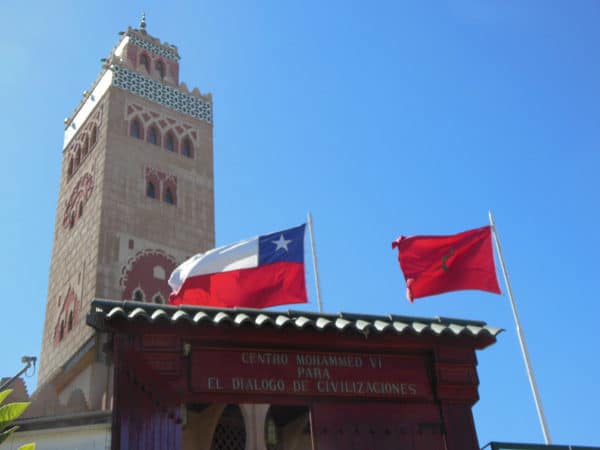
To their credit, these immigrants and their descendants largely integrated into Chilean life, their “off white” skin tone largely blending in with that of the Mediterranean-castizo masses. Precise data are not available, but they are not obviously more criminal or poor than the population at large. Chile has never had an Islam-inspired terrorist attack, for instance. And if anything, I would suspect that as a group, their average income is higher than that of Chile as whole (as is the case with many Middle Eastern peoples in America), as they tend to be successful farmers, shopkeepers, and businessmen. Periodically, one hears Republican politicians in America, such as Rick Santorum, warn about Islamist terrorists setting up shop in Latin America and sneaking into the United States. As far as I can tell, this has no basis in reality — and certainly is not true in Chile.

Marcela Sabat, a Palestinian-Chilean, and right-wing Congresswoman representing the upper class Santiago neighborhoods of Ñuñoa and Providencia. (Credit Image: © Sebastian Silva/EFE/ZUMAPRESS.com)
East Asians arrived on the Pacific coast of Latin America at the same time as they arrived on the Pacific coast of the United States and Canada. In Chile, many first came to Peru (which has a sizeable East Asian population) and were then absorbed when Chile annexed Peruvian land after the War of the Pacific. As with East Asian minorities everywhere, they have done well through their signature combination of intelligence, diligence, and passiveness. They have never been more than 1 percent of Chile’s population (if that), though, as we will see, Chinese immigration is on the rise.
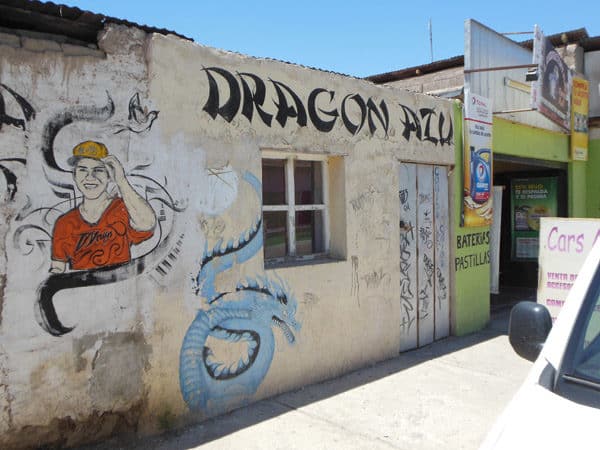
Chinese restaurant in Vicuña, a city in the mid-north.

Chinese restaurant in Temuco, a city in the south.
Chile’s Jewish population is estimated to be around 15,000-20,000, though another 55,000 Chileans are estimated to have some Jewish ancestry. (That number may be an underestimate: One of the most common last names in Chile is “Rojas,” which was one of the most common last names adopted by Spanish Jews who converted to Christianity in Medieval times.) Jews are just a drop in the bucket in a country of around 17.5 million people — but Chile still has one of the largest populations of Jews in all of Latin America. Uniquely, Jews in Chile are made up of all three main sub-groups of Jews: Sephardic from Iberia, Ashkenazi from Eastern Europe, and Mizrahi from the Middle East. Unsurprisingly, Jews do well in Chile, particularly in the fields of law, business, culture, and politics. The old joke, “two Jews, three opinions” is as applicable to Jews in Chile as anywhere else. Two of Chile’s more prominent Jews are Ariel Dorfman, the Marxist academic, and Rodrigo Hinzpeter, a very active right-wing politician and corporate lawyer. Perhaps the most internationally famous living Chilean, psychedelic cult-film director Alejandro Jodorowsky, is also Jewish. Two of Chile’s most beloved celebrities are also Jews: Mario Luis Kreutzberger Blumenfeld — better known as “Don Francisco,” the founder and host of Chile’s TV sensation, the “Teleton” — and Leonardo Farkas Klein, a flashy, bleach-blonde millionaire philanthropist.

Nicolás Massú, two-time Olympic gold medal winner in tennis. Chilean by birth, Hungarian Jew and Palestinian by ancestry.
To be continued . . .















